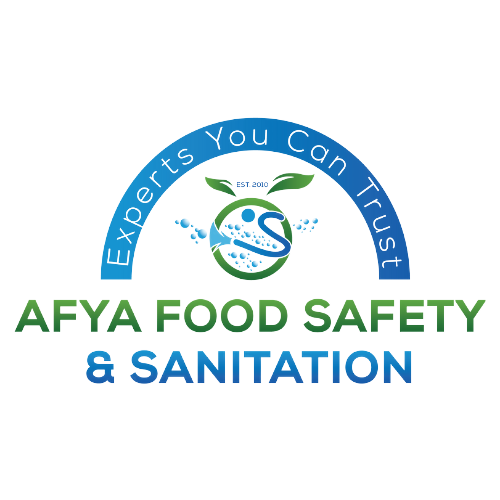
Please Wait For Loading

Please Wait For Loading
Maryland, MD USA
+1 (443) 666-9132
info@afyafoodsafety.com
Opening Hours: 9:00 AM - 5:00 PM
Copyright ©Afya Food Safety all rights reserved.
You can also reach us via Phone: +1 443 666 9132 or via Email:info@afyafoodsafety.com
Understanding Cross-Contamination: A Major Food Safety Risk
Food safety is a top priority for those who handle food professionally. Cross-contamination is one of the most frequent but avoidable causes of foodborne illness. Foodborne pathogens are disseminated when dangerous bacteria or chemicals are moved from one food item to another. By being aware of how this occurs and the best preventative measures, it is possible to lower health hazards drastically and guarantee safer food handling.
What is Cross-Contamination?
Cross-contamination is when germs, viruses, or other dangerous materials spread from one surface or food item to another. This situation becomes particularly hazardous when ready-to-eat items such as fruits, vegetables, bread, and cooked meals come into contact with raw meats, poultry, shellfish, and eggs.
There are three main ways in which cross-contamination can occur:
Common Sources of Cross-Contamination
The Health Risks of Cross-Contamination
Consuming contaminated food can lead to severe foodborne illnesses. Some common symptoms include nausea, vomiting, diarrhea, abdominal cramps, and fever. Vulnerable populations, including young children, elderly individuals, pregnant women, and those with weakened immune systems, are at higher risk of complications from foodborne illnesses.
How to Prevent Cross-Contamination
Preventing cross-contamination requires proper food handling, hygiene, and storage practices. Here are some essential measures to take:
Implement a Color-Coded System for Utensils and Cutting Boards
Using color-coded cutting boards and utensils can help prevent the transfer of harmful bacteria. This system ensures that raw and cooked foods never come into contact with the same utensils.
Store Raw Meats Separately from Ready-to-Eat Foods
Proper food storage is essential to prevent cross-contamination in refrigerators and pantries:
Clean and Sanitize Kitchen Surfaces and Equipment
Regularly cleaning and sanitizing surfaces and equipment helps eliminate bacteria before they spread:
Practice Proper Hand Hygiene
Hands are one of the biggest carriers of bacteria in the kitchen. Follow these steps to prevent contamination:
Educate Food Handlers on Cross-Contamination Risks
Proper training is essential for anyone handling food, whether at home or in professional settings. Food safety training programs can help reinforce best practices and reduce cross-contamination risks.
Conclusion
Cross-contamination is a major cause of foodborne illnesses, yet with proper precautions, it’s preventable. By implementing good hygiene practices, using a color-coded system for utensils, storing food correctly, and cleaning surfaces regularly, individuals can significantly reduce the risk of contamination. Whether cooking at home or in a commercial kitchen, being mindful of food safety protocols can protect individuals from harmful pathogens and promote healthier eating environments.
Related Posts
Categories
Antibiotic Resistance: A Growing Threat to Food Safety
April 17, 2025Understanding Cross-Contamination: A Major Food Safety Risk
March 31, 2025Calender